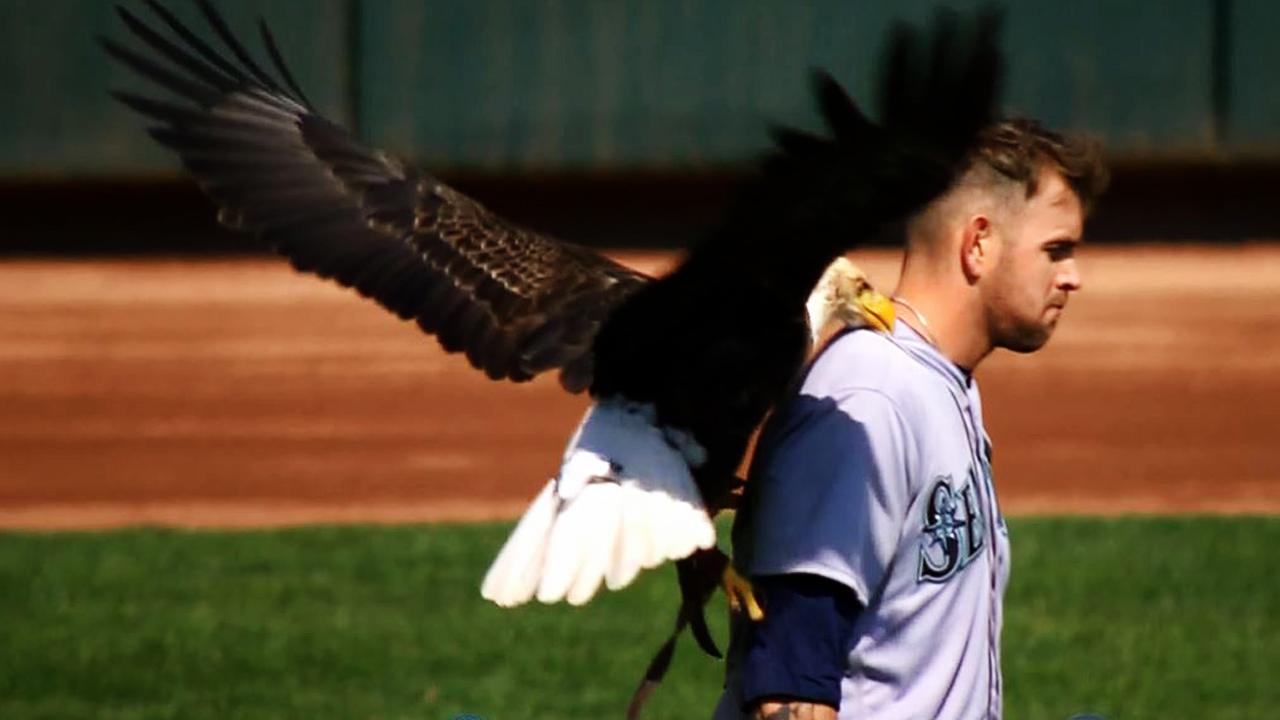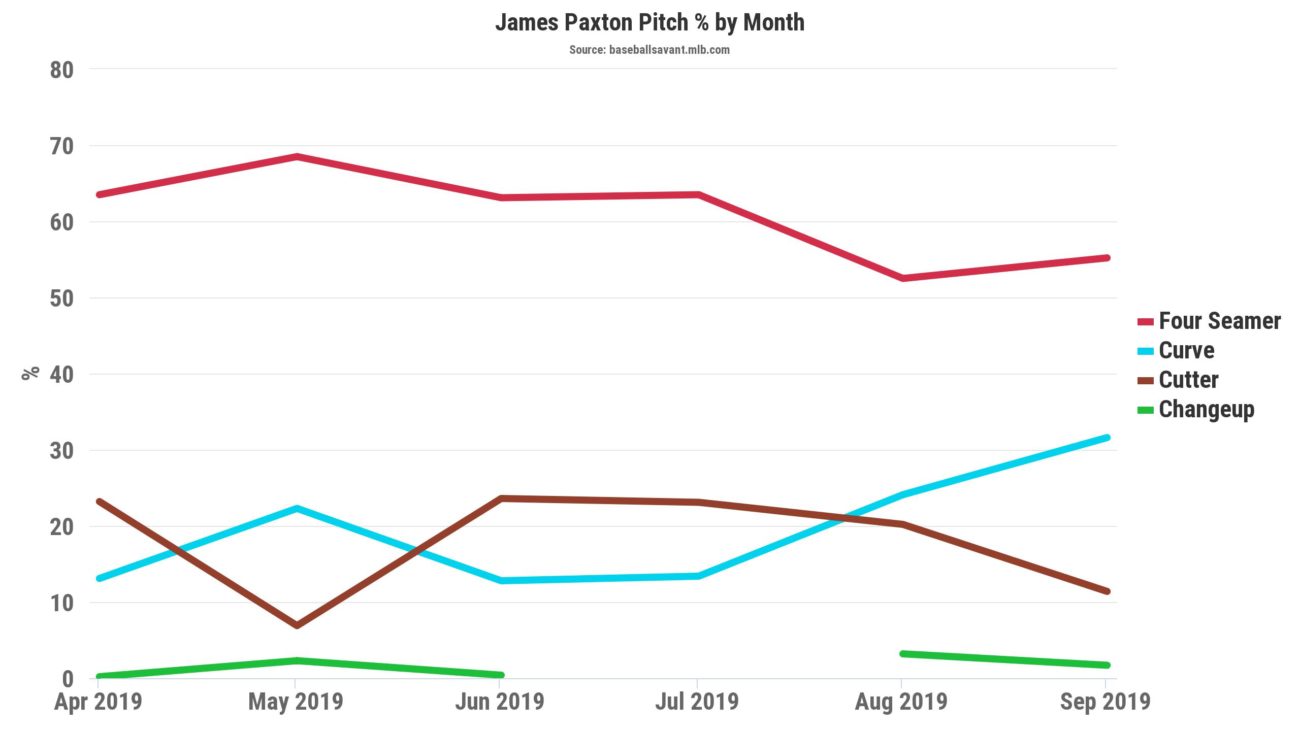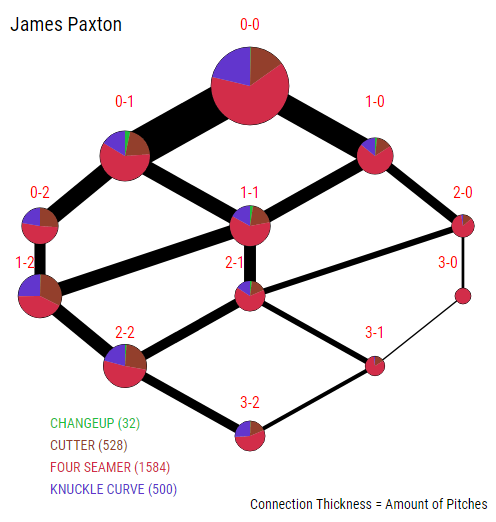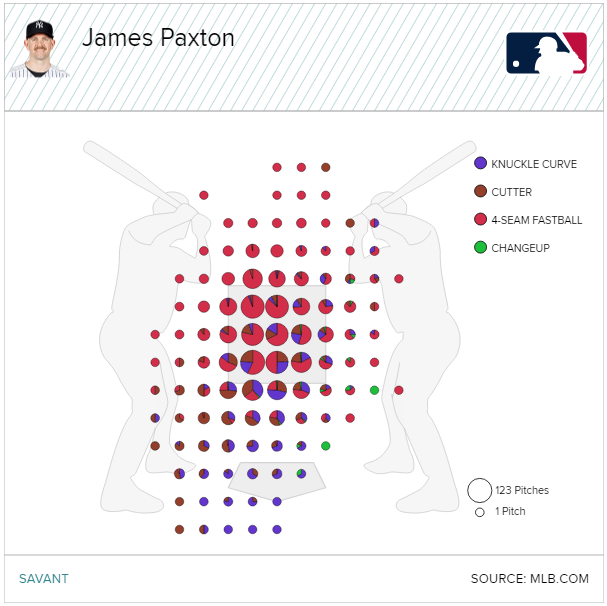Between now and each pitcher’s first start, we are going to do a deep dive Statcast breakdown on the New York Yankees’ rotation options. Previous we covered Jonathan Loaisiga, Jordan Montgomery, and Gerrit Cole. Up today: James Paxton
Background
Paxton has an interesting back story. After being drafted by his native Toronto Blue Jays in the first round in 2009, he opted to return to college at the University of Kentucky. However, he was deemed ineligible by NCAA because of a contract with Scott Boras. Gotta love those amateurism rules. Since he couldn’t pitch at Kentucky, Paxton pitched in Indy Ball for the Grand Prairie AirHogs (can we rename all MLB teams after something like AirHogs?) and was drafted by the Seattle Mariners in the fourth round of the 2010 draft.
Paxton made his debut for the Mariners in 2013. He showed tantalizing stuff and promise – striking out 16 hitters in a game and throwing a no-hitter in 2018 – while being sidelined with frequent injuries. He has gotten less injury-ridden each year, however. In 2014 and 2015 he only made 13 starts whereas in each of the past two seasons he made 28-29 starts. One would think the shortened season would hopefully help Paxton since he has durability concerns.
After the 2018 season, NinjaCash struck and the Yankees acquired Paxton for Justus Sheffield, Dom Thompson-Williams, and Erik Swanson.
Last Season
Last year was quite the roller coaster ride for Paxton. Overall his numbers were solid. In 29 starts, he threw 150.2 IP with 11.1 K/9 a 3.82 ERA, 3.86 FIP, 4.03 xFIP, 3.93 SIERA, and 3.5 WAR. As usual, Paxton missed bats with a 29.4 K% and a 30.7 Whiff% both of which were around the 80th percentile among all pitchers.
After a poor first few starts, Paxton had his best start of the year on April 16 against the Red Sox where he pitched to the following line: 8.0 IP, 2 H, 0 R, 1 BB, 12 K. That start had a game score of 89. That game felt like a turning point for the Yankees who started the year 6-9. The very next day was the Brett Gardner grand slam game which I wrote about earlier this year. Paxton backed that start up by dominating the Kansas City Royals in his next start throwing six scoreless innings with 12 K’s again becoming the first Yankee pitcher since David Cone in 1999 to have back-to-back 12+ K starts in his debut Yankees season.
There were some bumps in the road which we’ll get to, but Paxton ended the year with a HUGE win in Game 5 of the ALCS. With the Yankees facing elimination, he threw six innings of one-run ball racking up nine K’s. Notably, after 5.2 innings Boone came out to check if Paxton could get one more out, and here’s how he responded:
"Im good. Lets go. Lets fucking go" pic.twitter.com/29XtfySWPX
— Jomboy (@Jomboy_) October 19, 2019
After nearly giving up a home run to Robinson Chirinos but getting out of the inning, we got this reaction from Big Maple:
James Paxton 🔥
— Rob Friedman (@PitchingNinja) October 19, 2019
That’s the energy you love to see and what we want from the tall lefty this year.
Pitch Mix Breakdown
Before going into Paxton’s Statcast data, it’s worth mentioning the huge adjustment he made last summer. Paxton primarily relies on his fastball, but hitters were starting to catch up to it. Without a solid off-speed pitch, batters were able to sit dead red and tee off the heater. In July, Paxton started to throw his fastball and cutter less and double his curveball usage:
By cutting his fastball/cutter % from 85% to 65% and upping his curveball % from 15% to 35%, Paxton was able to get back on track. After having a tOPS+ of 171 in June and 175 in July (that means he was 70ish% worse compared to his average in those months), he had a tOPS+ of 69 (lolz) in August and 24 in September/October. He leveled all the way up afterward, and you hope it continues into this year.
Other metrics back this up as well. Here is his rolling xwOBA from last year:
You can see the dramatic difference towards the end of the year in his predictive metrics. The same was true for his actual performance:
That mess of a graph shows the shift from fastballs to curveballs and the coinciding increase in WAR trend.
Statcast Breakdown
A few things jump out at you in there. First, holy hell does Paxton have a low spin on his curve. In general, a high spin rate on curves is better, however, Paxton’s is so low batters aren’t used to seeing something like that. In fact, his curve was not only instrumental in his turnaround last year, but was his most valuable pitch. Paxton also has a below-average spin on his fastball, which is why it was hittable despite its high-end velocity. When batters make contact, they hit the ball hard. However, because he induces so many whiffs and strikeouts, Paxton maintains strong predictive metrics.
Paxton throws hard and has a good separation in velocity on all his pitches. One interesting thing about Paxton is he throws each pitch a similar percent of the time almost regardless of the count.
Aside from when he’s behind 2-0, 3-0, or 3-1, there isn’t much of a difference that speaks to Paxton’s comfort with his different pitches. That’ll definitely help keep hitters off-balance. Paxton also has a good low-middle-high breakdown with his pitches. He throws fastballs up, curveballs down, and cutters somewhere in the middle:
That breakdown is backed up by this fun video featuring Paxton’s strikeouts:
James Paxton, 12Ks in 30 Seconds. pic.twitter.com/8rGwY4f875
— Rob Friedman (@PitchingNinja) September 4, 2019
Changing hitters’ eye levels is key to Paxton’s success.
How can he improve?
The biggest thing for Paxton is the first inning. He is 50% worse than the league average pitcher in the first inning but better than average in every other inning. Last year he had a 9.00 ERA in the first inning while not having an ERA higher than 3.43 in any other inning. It’s maddening and anything Paxton can do to fix that issue will be huge.
Another area for Paxton to improve is his fastball spin rate. I wonder if the additions of Gerrit Cole and Matt Blake can help here. Cole dramatically increased his spin rate after going to Houston, which he credited Justin Verlander for. Perhaps Cole can impart some of that wisdom onto Paxton to make his fastball even better. Paxton has already starting to rely on Cole saying “I told him what I was feeling [on my extension] and he had some really good thoughts for me.” Likewise, Blake is known for his analytics work and he could help Paxton with his spin efficiency.
Plan for this year
Well, Paxton is penciled in as the No. 2 starter behind Cole and gets the ball tonight against Stephen Strasburg. I would love to see Paxton start the year off hot and carry that momentum through the shortened season. He is coming off an injury – he had back surgery over the offseason – and that is a concern. He’s healthy now, but still ironing out the kinks in his mechanics and velocity. He told Erik Boland of Newsday “I’m still looking for the last few ticks of velocity…” Paxton also mentioned he felt his release point was a bit low during Summer Camp so that is a #thingtowatch. I’ll be watching three things closely for Paxton in the early part of this year: velocity, release point, and spin rate. If those three are where they need to be, Paxton is in for a huge year, and could even make my Cy Young pick come true.
You can contact Rohan on Twitter @rohanarcot20











